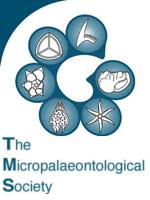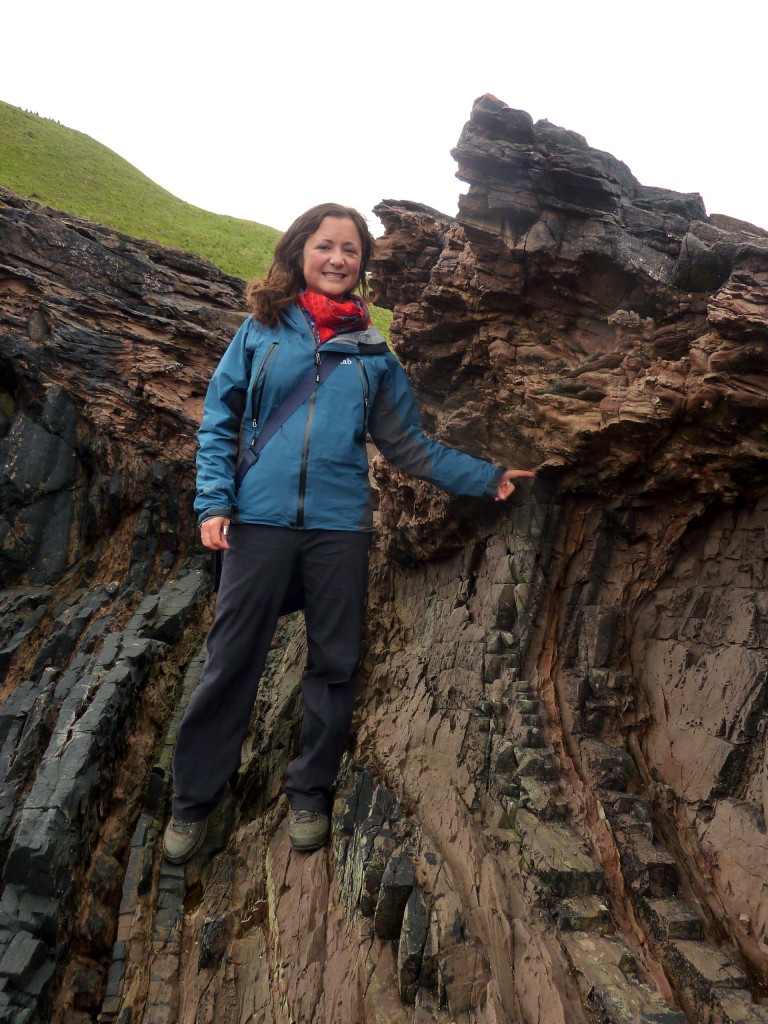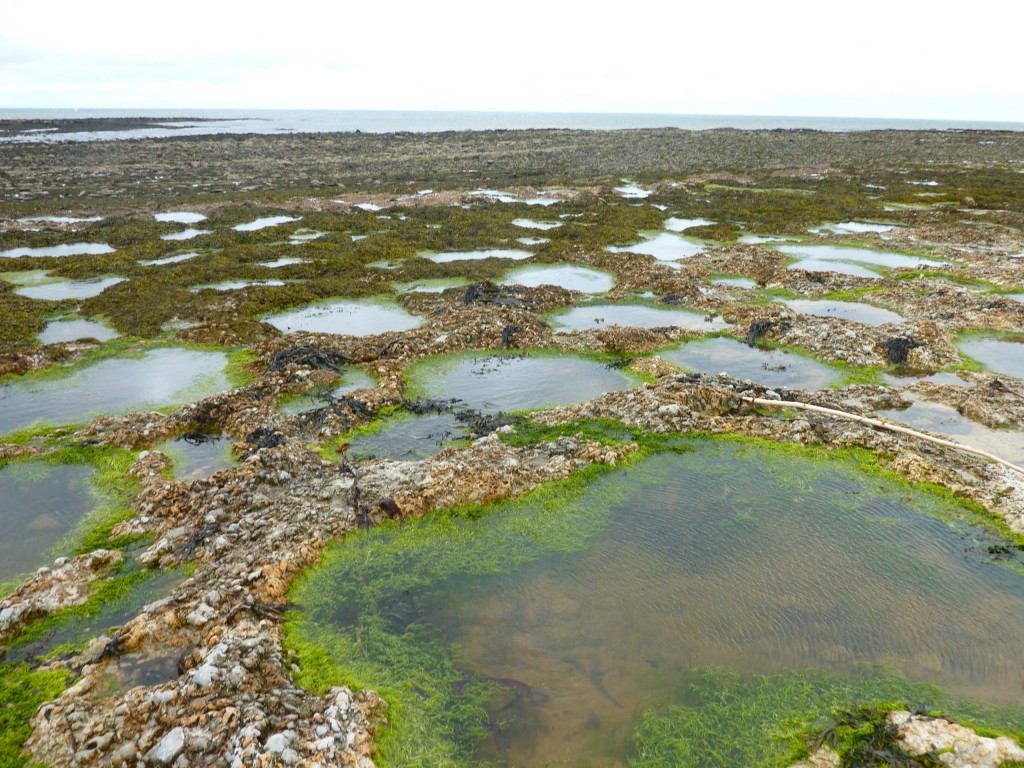Oxygen Isotopes in Foraminifera: Overview and Historical Review
Prof Paul Pearson has published a paper of oxygen isotopes in foraminifera, one of the main techniques in the Descent into the Icehouse project.
The paper shows how
the oxygen isotope ratio (δ180) of calcite depends mainly on the isotope ratio of the water it is precipitated from, the temperature of calcification, and, to a lesser extent, the pH. Foraminifera and other organisms can potentially preserve their original isotope ratio for many millions of years, although diagenetic processes can alter the ratios. Guidelines to assess the preservation of foraminifera are reviewed. A variety of empirical paleo-temperature equations have been proposed and some of the most important are discussed. Work on oxygen isotope ratios of foraminifera was instrumental in the discovery of the orbital theory of the ice ages and continues to be widely used in the study of rapid climate change. Compilations of deep sea benthic foraminifer oxygen isotopes have revealed the long history of global climate change over the past 100 million years. Planktonic foraminifer oxygen isotopes are used to investigate the history of past sea surface temperatures, revealing the extent of past ‘greenhouse’ warming and global sea surface temperatures.
Read and download the paper here

Foram art: calcite tests of selected benthic (left) and planktonic (right) foraminifera. These are from exceptionally well-preserved Paleogene sediments of Tanzania (33–45 Ma). Scale is approximate; diameters are from about 0.20–0.75 mm. Images: P. N. Pearson and I. K. McMillan. Note the literature is split between those who use the adjective ‘planktonic’ versus ‘planktic’ and between those who use ‘benthonic’ versus ‘benthic’. It so happens that planktonic and benthic are clearly in the ascendancy as of 2012, by roughly 10:1 and 30:1 respectively, as shown by a word search on abstracts. It has been argued that planktic is the correct Greek form of the adjective (Rodhe, 1974; Emiliani, 1991) but it has been pointed out that planktonic, like electronic, is perfectly good English, however ugly it may be in Greek (Hutchinson, 1974). The majority usage is followed here. Courtesy: Paul Peason Source: OXYGEN ISOTOPES IN FORAMINIFERA: OVERVIEW AND HISTORICAL REVIEW
Presentations, papers, and a curious case of planktonic foraminiferal evolution that may be linked to global cooling
By Paul Pearson
Paul Pearson, a Descent into the Icehouse participant, made two presentations to the Geological Society of America in Charlotte, North Carolina, this month. The first was a review of the most important of all the palaeoclimate proxy methods, vital to the Descent into the Icehouse project: ‘Oxygen Isotopes in Foraminifera: Overview and Historical Review‘.
It was accompanied by a review paper of the same title published in Paleontological Society Papers, Volume 18, p. 1-38. We hope to provide a link to the pdf on this blog shortly.
The second talk was on a curious specific case of evolution in the plankton in deep pelagic niches that may be linked to the global cooling that set in during the middle Eocene: ‘Evolutionary origin of Hantkenina (planktonic foraminifera) in the middle Eocene and comments on its biostratigraphic significance’ by Paul Pearson, Helen Coxall, Bridget Wade, and Brian Huber.
The study will be submitted for publication shortly. The graphic shows a line-up of beautifully preserved ‘transitional’ hantkeninids from a core in Tanzania, in emulation of the iconic image of human evolution (via a spear-wielding Neanderthal) beloved of textbooks.
Icehouse goes to TMS meeting on Edinburgh
Eleanor John and Kirsty Edgar report from Edinburgh
 This year, ‘The Micropalaeontological Society Foraminifera and Nannofossil Groups Joint Meeting’ (or TMS for short!) was held at the University of Edinburgh from 21-23rd June. Professor Paul Pearson, Drs Tom Dunkley-Jones, Kirsty Edgar, Eleanor John and PhD student Isabel Fenton from the ‘Descent into the Icehouse’ team were in attendance along with around 80 other eager micropalaeontologists.
This year, ‘The Micropalaeontological Society Foraminifera and Nannofossil Groups Joint Meeting’ (or TMS for short!) was held at the University of Edinburgh from 21-23rd June. Professor Paul Pearson, Drs Tom Dunkley-Jones, Kirsty Edgar, Eleanor John and PhD student Isabel Fenton from the ‘Descent into the Icehouse’ team were in attendance along with around 80 other eager micropalaeontologists.
The meeting brought together micropalaeontologists working in industry and academia, those more interested in the application of microfossils, e.g. for climatic and environmental studies and even a local artist, Anne Bevan, who has been collaborating with marine bio-scientists to create sculptures, images and poetry inspired by studies of microplankton.
The conference was held in the University’s Pollock Hall, situated next to Holyrood Park, and the iconic Arthur’s Seat was visible from the conference centre. When the rain stopped and the mist cleared many of us took advantage of the fact that it was only an hour’s walk to the summit and were treated to 360° views of the city and its surroundings.
There were four talk sessions each day with long breaks in between for us to peruse the posters. Kirsty Edgar and Isabel Fenton gave talks and Eleanor John presented a poster. Dr Tracy Aze, who is part of the NERC-funded UK Ocean Acidification Research programme focussing on Eocene ocean acidification events, won a prize for her talk on the evolution of Cenozoic planktic foraminifera. Well done to her!
Because the meeting was relatively small, it provided an excellent opportunity to meet key workers in the community in an intimate setting. This was aided by the fact that the meeting was incredibly well organized (with a generous supply of cakes to aid motivation!) with plenty of time for people to mingle and to discuss ideas.
Following the meeting there was a geological field excursion to the Scottish coastline. After two days of rain we were exceptionally lucky and the rain held off for a day of carboniferous fossil hunting fun and a trip to Siccar Point, one of the most famous of geologist James Hutton’s unconformities. The descent down to the unconformity was rather steep and not for the faint-hearted! But it was well worth the walk down to see the abrupt contact between the vertically inclined Silurian greywackes and the overlying gently dipping Devonian red sandstones and breccias that so inspired Hutton.
Conference highlights included:
1) In depth discussions of how we apply species concepts in the geological record;
2) Presentations on the impact of changing foraminifer palaeoecology on geochemical records;
3) Emphasis on the critical role that planktic foraminifer play as a primary means of age control throughout their stratigraphic range;
4) The fieldtrip on the final day of the conference and the walk up to Arthur’s Seat.
Foraminifera and calcareous nannofossils provide the basis for many of the geochemical and palaeoecological analyses underpinning the Descent into the Icehouse project, thus an understanding of their evolution and palaeoecology is vital if we are to properly understand our data. The conference provided an excellent insight into many of the issues surrounding the use of these organisms and we all came away feeling much better informed. Overall, It was well the visit and certainly helped by the beautiful surroundings!
Revised biostratigraphic framework for Cenozoic planktonic foraminiferal biochronology
The biostratigraphic framework for Cenozoic planktonic foraminifera was recently revised by Wade et al. (2011), including Paul Pearson, William Berggren and Heiko Pälike. This includes the stratigraphic interval of the ‘Descent Into the Icehouse‘ project.
A colour poster of the biostratigraphic chart is available at Download the revised Cenozoic tropical planktonic foraminiferal biochronology (Wade et al., 2011).
Links
Follow us on Twitter
Recent Posts
- Crucial new information about how the ice ages came about : PR & Podcast
- 2014 Sino-UK Coevolution of Life and the Planet Summer School
- Past and Future CO2 – Reconstructing atmospheric Carbon Dioxide
- Co-evolution of Life and the Planet conference in UCL and Geological Society London
- PR: What the geological evidence of the past tells us about modern sea-level rise










